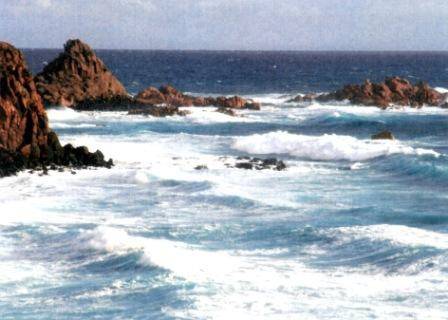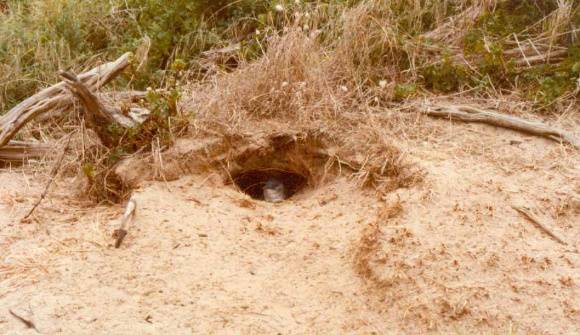| Back to search results » | Back to search page » |
|
Pyramid Rock and Southern Coastline, Phillip Island
LocationSUMMERLANDS VIC 3922 - Property No L10076
File NumberL10076LevelNational |
|
Statement of Significance
What is significant? Classified: 28/4/2008 LOCATION: The southern coastline of Phillip Island from Point Grant in the south-west to Smiths Point, which is located midway along the south coast.
The southern coastline of Phillip Island is a wild dramatic landscape; open to the ocean, isolated and windswept. It is characterised by basaltic cliffs, headlands and shore platforms, framed by coastal native vegetation and sloping pastures. This landscape is relatively free of development.
Most of this landscape is part of the Phillip Island Nature Park which provides nature viewing and conservation research and management through facilities at Seal Rocks, the Nobbies and the Penguin Parade. Walking tracks and viewing platforms allow visitors access to this landscape and views across the whole southern coastline of the island. Geological features including Pyramid Rock provide a focal point for visitors. The coastal vegetation and the surrounding land and marine environments provide habitat for numerous fauna and flora species including the iconic Little Penguin.
How is it significant?
The southern coastline of Phillip Island is of national significance for scientific and social reasons, and of state significance for aesthetic and historical reasons.
Why is it significant?
Aesthetic significance
The southern coastline of Phillip Island is of aesthetic significance for its rugged and dramatic appearance consisting of basaltic cliffs, headlands and shore platforms, framed by coastal native vegetation and sloping pastures. The coastline's open, windswept nature and lack of man-made structures evokes a sense of isolation and remoteness. The aesthetic quality of the landscape is demonstrated by its attraction for photographers, artists and visitors to the Nature Park. The 'visual qualities, including landform features, views, edges or contrasts, and ... its predominantly natural or undeveloped character, in which development is absent or clearly subordinate to natural landscape characteristics' contribute to the rating of the area as being of state significance (Planisphere 2006a, p47).
Extensive sections of coast which offer good public access to near-natural landscapes largely free of man-made structures are rare. This is particularly true for places which are within a short distance of major cities (Melbourne is two hours drive away).
Historical significance
The southern coastline of Phillip Island has historical significance for links to early European settlement and the development of Victoria. The 1906 shipwreck of the 'Speke' is adjacent to Watt Point. This landscape is also important in conservation history. Penguin tours to Summerland Bay in the 1920s provide an early example of eco-tourism in Victoria. The first Victorian 'Nature Park' was established here in 1996 as part of a state-wide plan to increase nature-based tourism. Roads on the island were used for the first Australian Grand Prix in 1928. The current Grand Prix circuit was built on the current site on Back Beach Road, adjacent to Pyramid Rock in 1951.
Scientific significance
This landscape contains nationally significant geological features which illustrate the geological processes that formed Phillip Island (local to national significance).
Biologically, the area is significant at the international level. The coastal vegetation and the surrounding land and marine environments provide habitat for numerous fauna and flora species which are at risk, including the migratory Short-tailed Shearwater which is protected under international agreements and the Little Penguin. The significance of this landscape has been recognised through inclusion on the Register of the National Estate. The coastline is also listed as a National Site of Zoological Significance.
The Phillip Island Nature Park is an internationally significant hub for research aimed at conservation of the Little Penguin and other wildlife.
Social significance
The park is an internationally-recognised tourist destination and environmental education facility. Over 0.5 million visitors each year visit the Phillip Island Nature Park for nature appreciation and active and passive recreation in this dramatic setting. 52% of these are from overseas. This landscape offers the most reliable public viewing of the Little Penguin in Australia and easy access to other wildlife species.
Group
Landscape - Cultural
Category
Other - Landscape - Cultural





